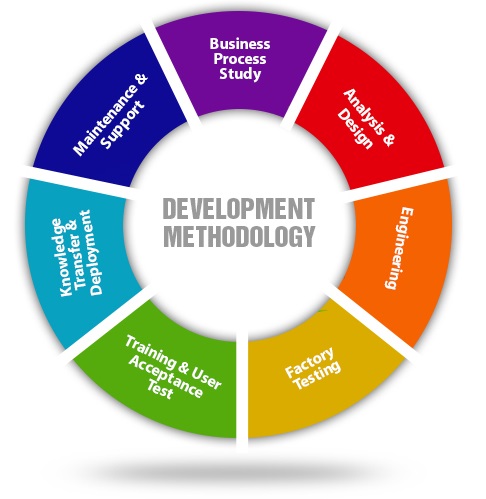Top 7 Software Development Methodologies Every Developer Needs to Know
Software development methodologies (SDMs) can help your team weave any project at hand seamlessly. However, before settling with an SDM, it’s crucial to understand its basic principles. It’s also imperative to know the different stages.
So, how do you identify the right software development methods for your next project?
In this post, we will cover different software development methodologies. These include the common types of SDM, and the pros and cons.
Take note that each has its specific features. Gauge your options, and choose the best one that suits your needs.
What are Software Development Methodologies?
A software development methodology involves several steps. These include planning, structuring, and performance tracking.
In some instances, it may also include extreme programming. The objective is to streamline the process when developing software or any product.
Almost all software development methodologies are non-technical. This means they do not deal with the technical aspects of software design and development. They focus more on the internal operations, and other processes involved in the project.
Brief History of Software Development Methodologies
The concepts of SDM started in the 1950s. Since then, experts discovered new approaches to improve their methods. These rapid developments have helped software engineers and developers innovate their systems.
Today, many organizations utilize SDM to boost productivity and achieve optimal results.
Common Software Development Methodologies
1. Agile Software Development Methodology
Agile is an approach where developers design a disciplined software management process. This gives room for some frequent changes in the project.
Within the strategy, you’ll come up with a conceptual, rather than a rigid framework. This is vital when executing your current and future projects.
First, you need to develop software in iterations or sprints (short time-boxes). This may take a few weeks or a month. Each iteration involves adding mini-increments of the new functionality.
Agile software development aims to reduce risks, such as the following:
- bugs
- cost overruns
- sudden changes in software requirements.
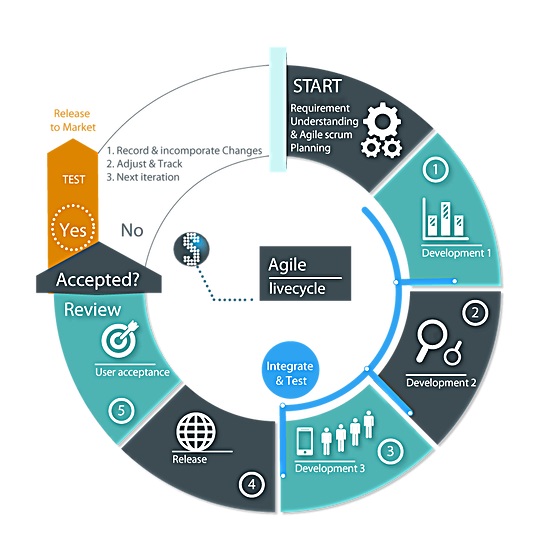
Pros
• Adaptive approach: Agile development allows you to address any changes the clients need.
• No room for guesswork: It provides clarity to every detail.
• Scalable schedules and costs: It makes it easier for you to foresee the legwork and costs.
• Focuses on the business value: It allows you to focus more on the vital aspects of the business.
• Focuses on the users: It allows users to easily monitor and select project features.
Cons
• More time and commitment: It requires face-to-face interactions to ensure the project meets the requirements.
• Lack of necessary documentation: Validations occur during the initial phase. This means you may need to add extra steps to document the details accordingly.
2. Lean Software Development Methodology
In lean software methodology, the focus is to improve productivity and quality. Here, you perform regular assessments to identify the best possible solution to streamline the process.
It follows the following main principles:
- Set clear objectives to determine the right solutions.
- Reduce wastage to boost operational efficiency
- Stay consistent by conducting performance tracking analyses.
- Show transparency by providing real-time data access.
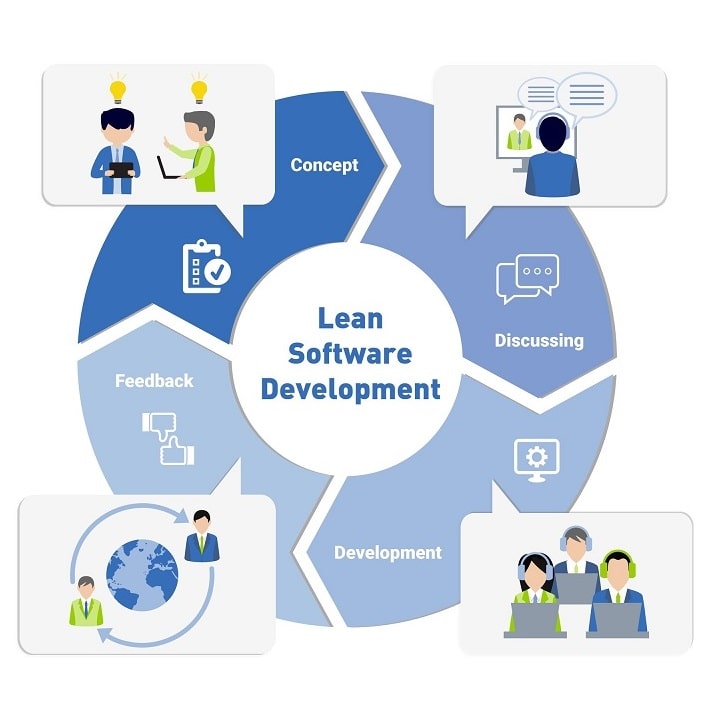
Pros
• Reduce wastage of resources: By eliminating wastage, you can optimize your software development process. This will help you save more resources.
• Understand what clients need: This allows you to assess customer’s behavior. From there, you can empathize with their issues, and convert feedback into actionable practices.
• It accelerates the learning curve: This gives you more time to improve other operational processes.
Cons
• Requires extensive expertise: One of the cons here is that you need a skilled workforce to execute this process.
• Needs optimum documentation: Delegating the documentation process is also one of the vital steps.
• Lack of precision: You will also need to keep track of the progress to ensure success.
3. Waterfall Development Methodology
This model is a rigid linear framework. It consists of sequential stages targeting distinct goals. These phases include:
- Requirement
- Design
- Implementation
- Verification
- Maintenance
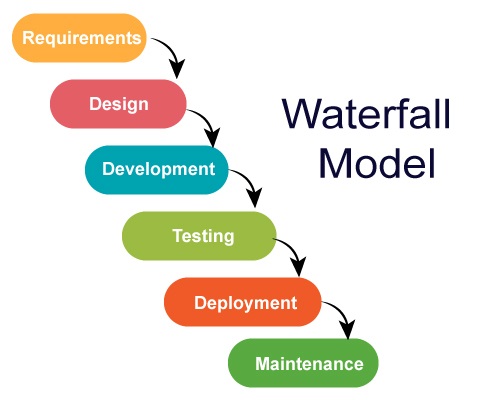
In this method, your team needs to complete each phase. Make sure to follow the basic principles and polish every detail. If you miss any significant item, it can be challenging to modify the entire process.
Pros
• Clear structure: Since you need to complete every step, you can easily determine the possible errors.
• It’s more manageable: You can minimize overlapping procedures and make necessary adjustments along the way.
• Set more accurate goals: Waterfall allows you to determine the project’s overall goal.
• High visibility: Transparency will not be an issue for both parties.
• Reduced development issues: The team performs quality assurance tests at each phase.
• Systematic approach: Robust transfer of information from one phase to another because of its systematic approach.
Cons
• Rigid to changes: This is one of the biggest problems when implementing this method. Here, you cannot backtrack to any changing requirements.
• Excludes the client and user: This only involves the internal process to help the developers in moving forward. It doesn’t encourage the active participation of the client or user.
• Not suitable for complex projects
4. Rapid Application Development (RAD) Methodology
Rapid Application Development is a high-speed adaptation of Waterfall’s linear sequential model. This one, however, requires you to devise your process based on specific variables.
These include the following:
- Requirements planning
- User design
- Construction
- Cutover
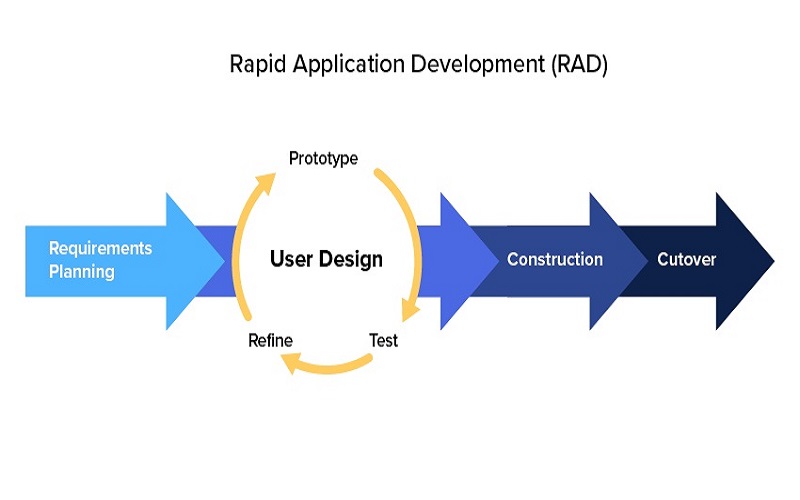
Here, the developers devise a platform based on how the users respond to each activity.
The objective of Rapid Application Development is to deliver the best possible results within the shortest time frame.
Pros
• Quick results: Rapid Application Development allows you to quickly create an application development platform that is time-sensitive.
• Customer feedback: Each party can interact in real-time and provide feedback.
• It reduces risks and efforts on the part of the engineers.
Cons
• Highly dependent on individual performances and a strong team. Otherwise, it is easy to derail from specific requirements.
• It does not apply to complex systems.
• More expensive compared to other methods.
5. DevOps Methodology
This requires a more structural collaboration between both parties.
In this platform, you need to cover several phases, such as:
- development process
- internal operations
- quality assurance.
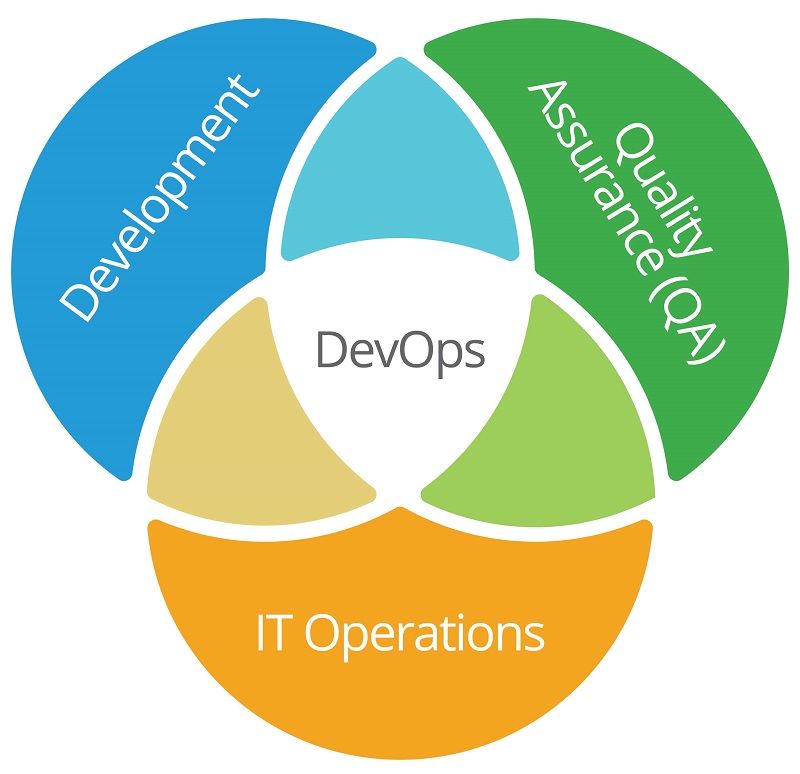
Just like the other methods, consistency in task delegation is advisable. As much as possible, the teams involved should work in the same building.
Pros
• It can reduce human error.
• You can fast-track the delegation of tasks to each department or individual.
• It promotes uniform or standard processes.
• Reduces wastage of resources in analytics, cloud infrastructure, and data management
• Improved customer experience due to high-quality systems
• Clear project vision within the development and operational teams
Cons
• Transition issues: You may need to rebuild your team, internal processes, and applications to execute the system.
• Lack of personnel: Since it is a new methodology, it is rare to find experienced DevOps engineers.
• Determining the right tool can be challenging in this scenario.
6. Scrum
Scrum is a system development methodology that implements agile development. The objective is to simplify the process by utilizing various software projects.
Lean concepts also influence the scrum framework.
Within the process, the developers also need to optimize the system based on user behavior and activity.
The scrum methodology has three pillars of values:
- Transparency: To provide more visibility into the organizational goals. This also includes the team members' roles and functions.
- Inspection: To align every process with the organization's requirements.
- Adaptation: To take quick actions whenever there are changing requirements.
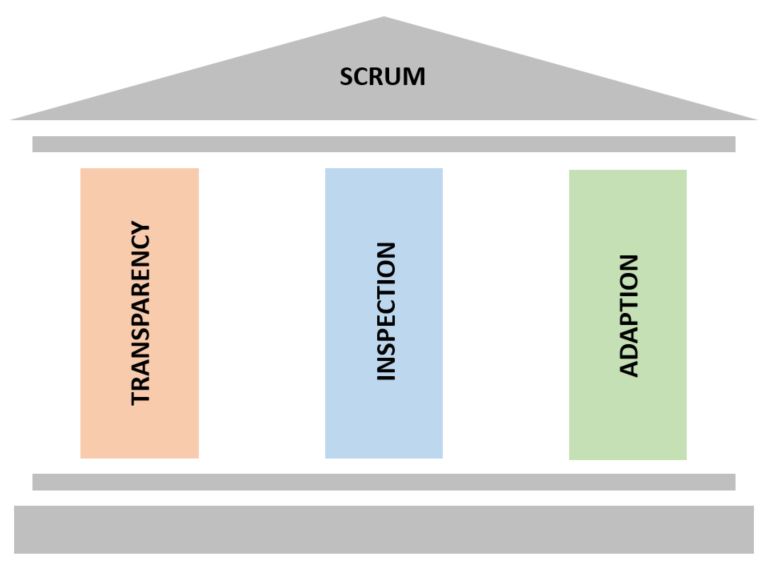
Pros
• More interactive: The model turns any user feedback into actionable and testable modifications.
• Adaptability and flexibility: Gives room for changing requirements seamlessly
• Improve team morale: Committing to the pillars connects the team to the high-level organizational goals.
• Reduce wastage of resources: The engineers can focus on delivering functional and tangible features.
Cons
• It requires extensive expertise.
• No hard deadlines: It can be challenging to get constant project updates.
• Limited capacity in terms of slow-moving projects.
• Difficult to estimate the resources. It lacks the end-to-end visibility of the software development process.
An excellent automatic answer checker from your development team should have a memory. It should remember what the user searched for recently. The app should never provide misleading information (should collect information from trusted sources only)
Your software should allow users to find answers to related questions asked by others.
7. Kanban
Like Scrum, Kanban is an agile framework aiming to improve efficiency and collaboration. However, it lacks the time-boxed and predefined roles.
Here, you can be more flexible when it comes to task management.
While Kanban doesn’t have a specific set of rules, here are its general principles:
- Workflow visuals: It displays every member’s daily tasks.
- Reduce work-in-progress: It reduces bottlenecks and ensures that teams are working on only a few things at a time.
- Improve workflow: After completing a particular task, users can easily proceed to the next step.
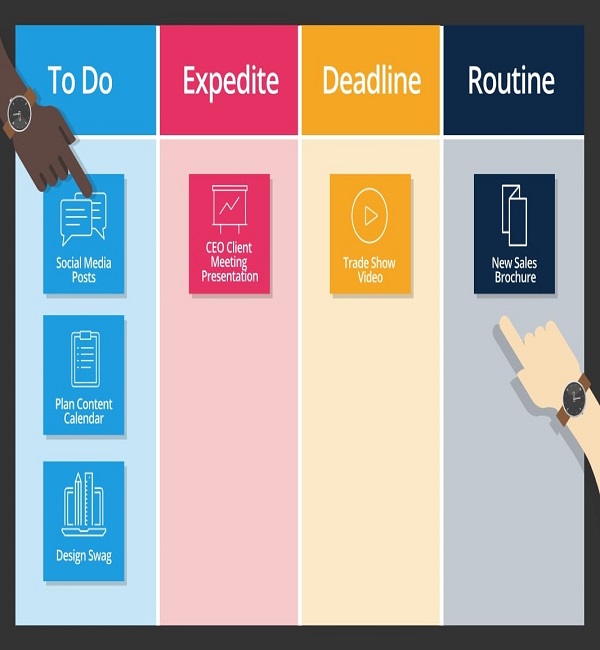
Pros
• Helps in addressing resource and time shortage using the Kanban Board.
• Speedy and continuous delivery
• Versatility and flexibility: It gives more room for implementing changes in requirements
• User-friendly: Kanban features a pull-based system, which makes it easier to navigate.
Cons
• Too many tasks due to the continuous approach, leading to bottlenecks
• Lack of time-frames makes it challenging to establish timelines for delivery.
• Mismanagement of Kanban board: You need to monitor it frequently to avoid clutter and ensure it is up-to-date.
• Difficult to implement, especially for bigger organizations.
FAQ:
1. What are the different software development methodologies?
As discussed, popular software development methodologies include:
• Agile Development
• Lean
• Waterfall
• Rapid Application Development (RAD)
• DevOps
• Kanban
• Scrum
Other software development methodologies include:
• Extreme Programming (XP)
• Feature-Driven Development (FDD)
• Dynamic System Development Model Methodology (DSDMM)
• Spiral Model
• Prototype Methodology
• Joint Application Development Methodology
• Rational Unified Process methodology
2. What is the best software development methodology?
There are no straight-forward answers for this one. The right development methodology depends on your overall goals. Assess your structural system.
Keep in mind that each platform has specific features. Whether it’s feature-driven development methodology or your system requires extreme programming, you need to gauge your options.
Conclusion
Implementing the right development methodologies is crucial to every organization. This can help streamline your process and deliver the best results.
Before selecting a platform, it’s best to work hand-in-hand with your development team. Make sure to understand the principles, applicability, advantages, and disadvantages. This will help determine the best model for your organization.
Having a hard time choosing the right software development for your team?
Consult a professional for expert advice. Laneways Software & Digital provides premium software solutions to businesses of all sizes. For more details, call us now!
Jerome Rault
Partner with a software development team one that's passionate about creating success
With the broadness of the internet, and it’s continuous expansions across different platforms it is hard to leave a mark that lasts. With digital marketing services, easily make a mark of your own that pulls customers in from different parts of the internet.
